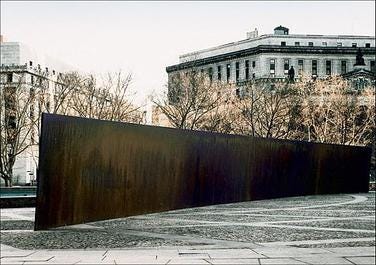Vox populi
Something struck me as quite funny this week. Yet again, it is an instance of the slippery incoherence of how we talk and how we think about art.
Another one-liner political cartoon in the form of a wall mural appeared on the side of a north London building. The crowd-pleasing, auction-house-sweetheart, bad boy of the art-world confirmed that it was in fact an authentic Banksy production, and thus appropriate for lauding and instagram selfies - not merely a piece of valueless, unsightly graffiti. The piece is on a wall behind an aggressively pruned tree. Banksy painted green foliage on the wall, attempting to create an optical illusion whereby it would look, to a viewer standing before it, that the tree had leaves. There is also a person stenciled on the wall depicted holding a pressure washer (I guess, to wash off the leaves that were painted?).
The reaction to what happened next made me laugh.
The Daily Mail’s headline read “Banksy's tree mural has been defaced after just three days - with vandals hurling white paint across the new north London artwork before a local authority erected a metal security fence.”
The AP’s Jill Lawless reported the following: “It was nice while it lasted. An environmentally themed mural by elusive street artist Banksy that appeared last week on a London street has been encased in plastic and surrounded by fencing after an apparent act of vandalism.”
An apparent act of vandalism huh?
I have questions.
What was it called when Banksy did it? As far as I can tell, he doesn’t ask for permission from the building's owner. He is dubbed a “street artist,” that’s different from a vandal I guess. The artist does his best to maintain a subversive Fuck-the-system position, but despite his best efforts he can’t help garnering the kind of widespread approval reserved for a teenybopper pop-star. His protestations against commercialism and his anonymity only fuel his mystique and add value to his brand.
Of course this isn’t new. Graffiti started to lose much of its claim to subversitivity nearly half a century ago when graffiti’s brightest lights - artists such as Kieth Haring and Jean-Michel Basquiat - were made into art-stars; showered with approbation and made very wealthy. But, there remains the cultural conflict between art-world denizens who think those who disapprove of graffiti are retrograde and bourgeoisie, and the non-art-world middle class who call it ugly and an act of vandalism. What some call art is what others call urban decay; and if an owner of a building paints over the scrawling tags of gang members marking their territory like cats pissing on a wall, he is a dilettante.
What is the difference between vandalism and art? I guess it depends on who you ask. But it would seem widespread approval and stratospheric auction prices are a good indication to some what is not vandalism.
All of this public vs art-world broigus makes me wonder what would happen to Tilted Arc today.
Richard Serra died on Wednesday. To say he was an eminent figure of American art would be an understatement. In fact, he is probably one of the most important sculptors of the last seventy years. I recommend reading Roberta Smith’s fantastic Obituary for the New York Times to get a scope of his impact.
In 1981, Serra’s 120 ft long, 12 ft tall, slab of COR-TEN steel titled Tilted Arc was installed in Foley Federal Plaza in New York City. It was met with immediate backlash. Many found it incredibly ugly. But the most common complaint seemed to be the inconvenience it caused. The rusty steel wall essentially bisected the plaza causing people who worked in the surrounding buildings to transverse the sculpture; which was Serra’s intention. All of the issues brought up by Serra’s work: navigating space; the shifting form; and the relation of the body to that space and form, didn't mean much to those who had to live with the art. If you ever got in a New Yorker’s way on his morning commute, you would know that they aren't necessarily likely to greet a delay with equanimity.
The United States General Services Administration's Art-in-Architecture program commissioned the work and the National Endowment for the Arts recommended Serra for the job. On their authority the art was created for the plaza. It was they who funded it and created it, and they got to call the shots. As Serra stated “Art is not democratic. It’s not for the people.”
Eventually however, the people did get to decide. After public hearings and a trial, the piece was dismantled and removed from the square. Since the piece was “site-specific,” designed especially for the space, according to Serra, it was destroyed by its removal. Serra threatened to leave the US if the sculpture was removed, which he never followed through with. The artist would go on to complain that “in the United States, property rights are afforded protection, but moral rights are not.”
During its life, Tilted Arc became a target for taggers. A canvas for fellow art world luminaries to write their names. The spray paint was immediately scrubbed off the artwork. Was the moral freedom of expression of the graffiti writers trumped by someone else’s property rights? Or perhaps they should have had respect for another artist’s work? Or they just engaged in a simple act of vandalism?
For Serra, the Tilted Arc incident was a rare loss in the life of a hugely successful artist. As we have learned, the property owner whose wall was painted on by Banksy, put up plastic panels so the valuable mural would not be “defaced” again by vandals. The random landlord whose property is graced with an authentic Banksy treats it like a winning lottery ticket. These are two artists that attempt a dangerous dance and ask an important question in the process. How does one make art for public consumption without being consumed?





